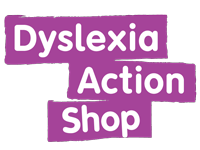This website uses cookies to ensure you get the best experience on our website. About consent.
SDMT - Symbol Digit Modalities Product Range
Required qualifications
QTS/QTLS or equivalent and CCET Level 7or QTS/QTLS or equivalent and PGCert /PGDip/MA/MEd/MSc in SEN (including psychological assessment) SpLD APC or equivalent
or QTS/QTLS or equivalent and Assessment Qualification at Level 7 e.g. CPT3A
or QTS/QTLS or equivalent and Professional Body Membership e.g. DA Guild MDG
Use of the Symbol Digits Modalities Test (SDMT) in assessing for exam access arrangements.
SDMT - The Symbol Digit Modalities Test
The Symbol Digit Modalities Test is a measure of concentration and decision-making.
Benefits
- SDMT detects cognitive impairment in less than 5 minutes. This simple, economical test is a way for busy clinicians to screen for organic cerebral dysfunction in both children (8 years and older) and adults.
- Brief, easy to administer, and much less expensive than neuropsychological test batteries.
- Demonstrates sensitivity in detecting not only the presence of brain damage, but also changes in cognitive functioning over time and in response to treatment.
- An effective initial screener, detecting cerebral dysfunction of almost any kind. However, like any single neuropsychological test, the SDMT is optimally used as part of a battery of instruments.
Complete kit includes:
- Manual
- 25 WPS Autoscore Test Forms.
Description
The SDMT involves a simple substitution task that neurotypical children and adults can easily perform. Individuals with cerebral dysfunction perform poorly on the SDMT, in spite of normal or above average intelligence. It may include those with motor disabilities or speech disorders.
This test involves the use of a reference key. An examinee has 90 seconds to pair specific numbers with given geometric figures. Responses can be written or oral, and for either response mode.
In addition, SDMT is relatively culture free and is accessible by those who speak English as a second language.
In written form, the test lends itself to group administration so is an economical way to screen apparently neurotypical children and adults for possible motor, visual, learning, or other cerebral dysfunction.
Finally, unlike other symbol substitution tests, the SDMT also gives you the opportunity to compare written and spoken responses from the same individual.
Author: Aaron Smith PhD
Age range: 8 years to Adult
Format: Patient substitutes a number, either orally or written, for randomized presentations of geometric figures
Administration: Individual (written test can be performed with a group)
Testing time: 5 minutes
Published date: 1973
Publisher: WPS Publishing
Want to qualify to use this test?
Take your competence in psychometric testing to the next level with the gold standard qualification for the education profession – Certificate of Competence in Educational Testing – set by the British Psychological Society (BPS).
Looking to become an Access Arrangements Assessor? Learn how to use psychometric testing instruments effectively (CCET) and apply them in exam access arrangements (AAC) confidently and competently with the Certificate in Psychometric Testing, Assessment and Access Arrangements (CPT3A).


